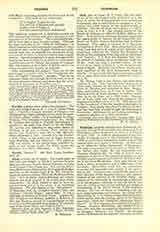

Cusae, a titular see of Egypt. The Coptic name of this town was Kosko; in Greek it becomes Kousos, Akouasa, Akoussa, Kousis, Kousai, Khousai; in Latin we find Cussa, Cusw, Chusae, etc. It is now the fellahtown, El-Kousiyet (Alquoussiah, Al-Kussij e, El-Kusiye, Qossieh), on the western bank of the Nile, inland between the railway stations Derfit esh-Sherif and Montfalfit. Near it stands Deir-el-Moharag, the largest, richest, and most peopled of the seven great Coptic monasteries; the Holy Family is said to have sojourned there and it is the center of an important pilgrimage. The city figures in the “Synecdemus” of Hierocles (730, 9), Georgius Cyprius (764), and Parthey’s “Notitia Prima” (about 840). It was a saffragan of Antinoe in Thebais Prima. Lequien (II, 597) mentions two bishops, Achilles, a Meletian, in 325, and Thomas, present at Constantinople in 553. Cusse is to be distinguished from Kysis in the southern part of the Great Oasis, now Dfish el-Kal’a.
S. PETRIDES

